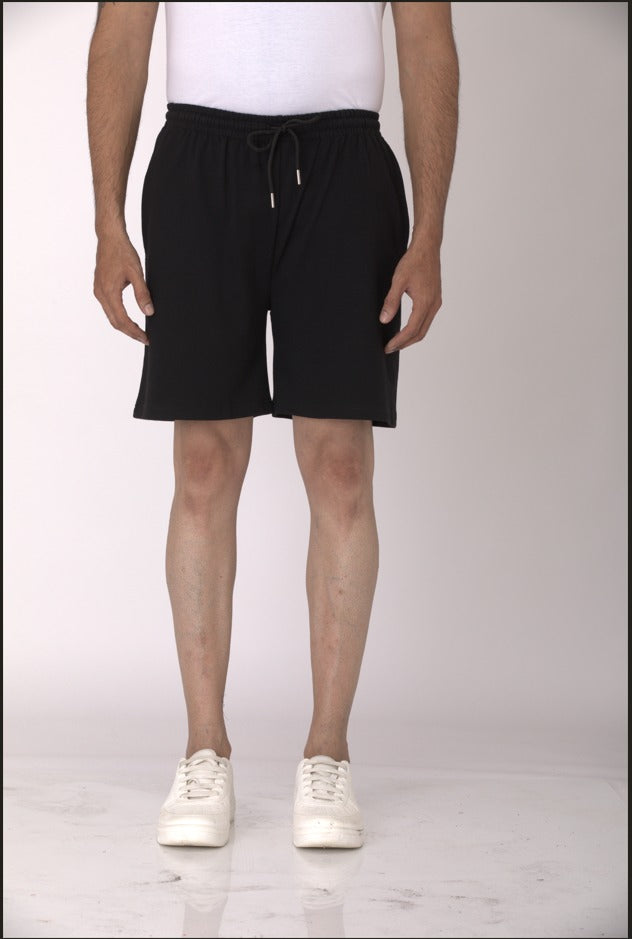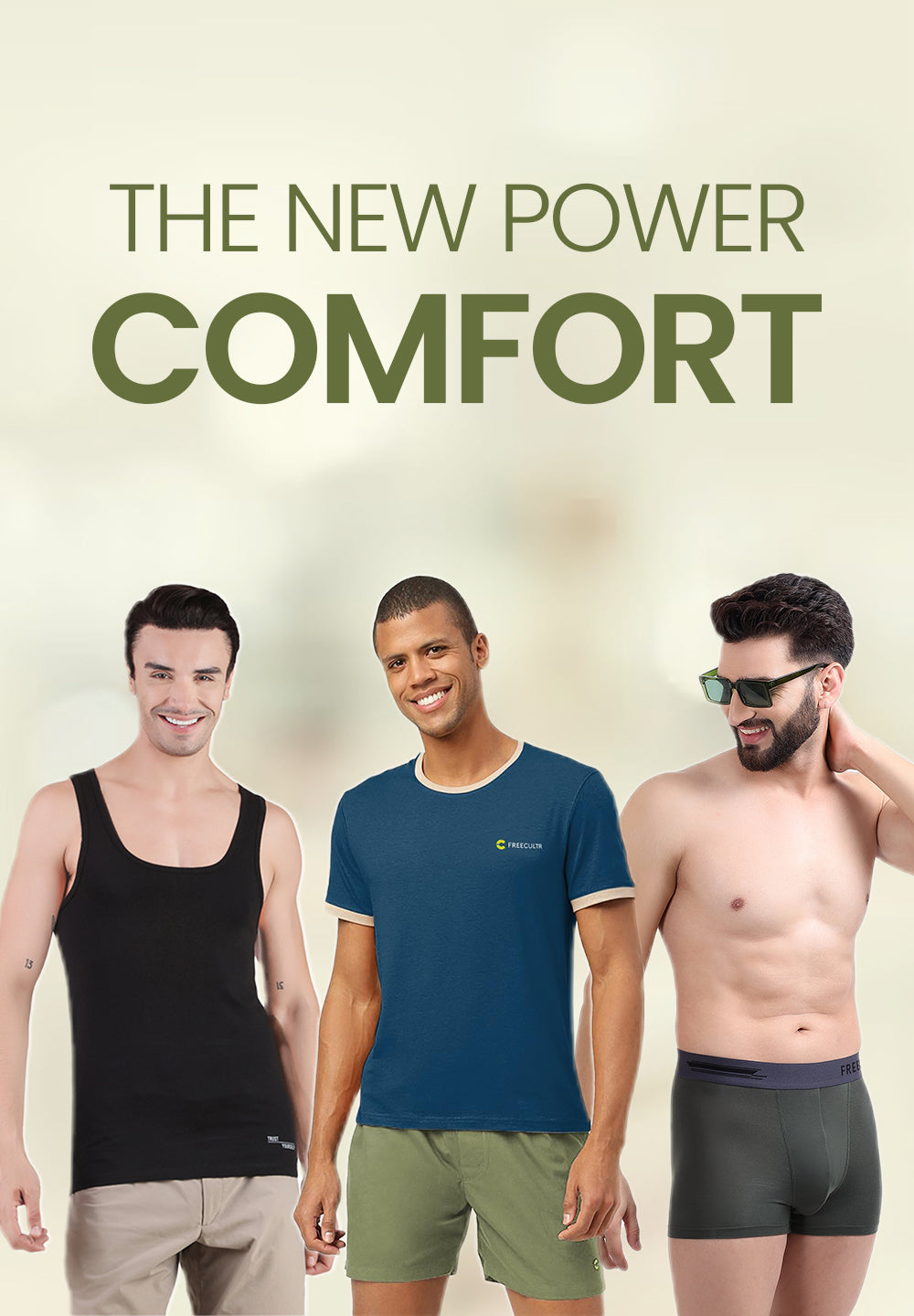The Indian activewear market is booming, driven by a surge in health consciousness. Navigating the choices can be a workout in itself. Freecultr and Damensch both offer premium innerwear and activewear, yet gym-goers often gravitate towards Freecultr. We’ll examine comfort and performance through fabric technology, comparing Freecultr's Supima cotton blends against Damensch's bamboo-based offerings, assessing moisture-wicking capabilities and odor control. Fit and functionality are crucial, so we'll evaluate design features, from Freecultr's anti-chafe seams to Damensch's no-marks waistband, alongside style and branding, considering how these elements contribute to a perceived value that influences purchasing decisions. This comparative exploration helps decipher the nuances that make Freecultr a preferred choice for many.

Understanding the Gym-Goer's Needs: Comfort, Performance. Style
Gym-goers are a diverse group. They share some core needs when it comes to workout apparel. These needs can be broadly categorized into comfort, performance. Style. Comfort relates to how the clothing feels against the skin, its breathability. Its ability to prevent chafing. Performance considerations include moisture-wicking capabilities, flexibility. Support. Style, of course, is about aesthetics and feeling confident in what you're wearing. Choosing the right activewear can significantly impact workout experience and motivation.Material Matters: A Deep Dive into Fabric Technology
The fabrics used in activewear play a crucial role in determining its comfort and performance. Key technologies include:- Moisture-Wicking Fabrics: These fabrics pull sweat away from the skin, allowing it to evaporate quickly. This helps keep you cool and dry during intense workouts. Polyester and nylon are common choices for their moisture-wicking properties.
- Antimicrobial Treatments: These treatments prevent the growth of bacteria that cause odors. This is especially essential for activewear that is worn frequently and washed less often than other clothing. Silver-based and zinc-based treatments are common examples.
- Stretch Fabrics: Fabrics with spandex (also known as elastane or Lycra) offer excellent stretch and recovery, allowing for a full range of motion during exercise. The percentage of spandex in a fabric blend affects its stretchiness.
- Breathable Fabrics: Fabrics that allow air to circulate help regulate body temperature and prevent overheating. Mesh panels and open-knit constructions are often used to enhance breathability.
The Fit Factor: Why Contouring and Support Make a Difference
The fit of activewear is just as vital as the fabric. A well-fitting garment will move with you, provide support where needed. Minimize chafing.- Compression: Compression garments are designed to provide support to muscles and improve blood flow. They can also help reduce muscle soreness and fatigue. But, compression should not be so tight that it restricts movement or circulation.
- Contouring: Contouring refers to the way a garment is shaped to flatter the body. This can include features like strategically placed seams, ruching. High waistbands.
- Ergonomic Design: Ergonomic design focuses on creating garments that move naturally with the body. This can involve features like articulated knees and elbows, gussets in the crotch. Seamless construction.
Men's Underwear: A Critical Piece of the Activewear Puzzle
For many gym-goers, the choice of Men's Underwear is just as crucial as their outer layers. Poorly designed underwear can lead to chafing, discomfort. Even performance issues.- Support: Adequate support is essential for comfort and performance, especially during high-impact activities. Look for underwear with a supportive pouch or contoured design.
- Breathability: Breathable fabrics like moisture-wicking polyester blends or natural fibers like merino wool are vital for keeping you cool and dry.
- Construction: Seamless construction or flatlock seams can help prevent chafing. Also, consider the waistband – a comfortable, non-binding waistband is crucial.
Price vs. Value: Balancing Cost and Quality
Activewear can range in price from budget-friendly to high-end. It's vital to consider the balance between price and value when making a purchase. A cheaper garment might seem appealing at first. It may not last as long or perform as well as a more expensive option. Consider the following factors when evaluating the value of activewear:- Durability: How well will the garment hold up to repeated washing and wearing? Look for fabrics that are resistant to pilling, fading. Stretching.
- Performance: Does the garment provide the features you need for your workouts, such as moisture-wicking, breathability. Support?
- Comfort: How comfortable is the garment to wear? Does it fit well and prevent chafing?
- Longevity: How long will the garment last before it needs to be replaced? Investing in higher-quality activewear can save you money in the long run.
Real-World Applications: Case Studies and User Experiences
To illustrate the importance of choosing the right activewear, let's consider a few real-world scenarios:- Marathon Runner: A marathon runner needs activewear that is lightweight, breathable. Moisture-wicking to prevent overheating and chafing during long runs. They might also benefit from compression garments to support their muscles and improve blood flow.
- Weightlifter: A weightlifter needs activewear that provides support and flexibility. Compression garments can help stabilize muscles and prevent injury. They might also prefer looser-fitting clothing to allow for a full range of motion.
- Yoga Enthusiast: A yoga enthusiast needs activewear that is comfortable, stretchy. Allows for a full range of motion. They might also prefer moisture-wicking fabrics to prevent slipping on their mat.
Ethical Considerations: Sustainability and Fair Labor Practices
In addition to comfort, performance. Style, some gym-goers are also concerned about the ethical considerations of their activewear purchases. This includes factors such as sustainability and fair labor practices.- Sustainable Materials: Look for activewear made from recycled materials, organic cotton, or other sustainable fabrics.
- Ethical Manufacturing: Choose brands that are committed to fair labor practices and safe working conditions.
- Transparency: Support brands that are transparent about their supply chain and manufacturing processes.
Conclusion
Let's look at the road ahead. Freecultr's success with gym-goers hinges on understanding their priorities: comfort, performance. Style that lasts beyond the workout. We've seen how their snug fit trunks, especially, address the need for maximum support and prevention of riding up, crucial for intense training. Looking forward, the athleisure trend is only going to grow, blurring the lines between gym wear and everyday clothing. Freecultr can solidify its position by continuing to innovate with fabrics that offer superior moisture-wicking and breathability, addressing specific needs voiced by gym-goers. Next steps? Focus on community building, leveraging social media to showcase real athletes using Freecultr gear. Consider partnerships with local gyms and fitness influencers to increase visibility and credibility. Don't just sell clothes; sell a lifestyle. Embrace the challenge. Freecultr can become the go-to brand for those who demand both performance and style in and out of the gym.More Articles
Men's Snug Fit Trunks for Men – Maximum Support & Prevents Riding UpMen's Modal Trunks for Men Comfortable – Superior Softness & Moisture Wicking
Full Sleeves T Shirt Men – Versatile Style & Lasting Comfort
Seamless Boxer Shorts for Women Full Coverage – Invisible Under Clothes & Gentle Support
FAQs
So, I've seen folks at the gym rocking Freecultr instead of Damensch. What's the deal? Is there a secret?
Well, it's not exactly a secret. A lot of gym-goers find Freecultr appeals to them for a few key reasons. Think of it like this: both brands offer great activewear. They cater to slightly different preferences. It often boils down to what you personally value most in your workout gear.
Okay, give me the specifics! What are these 'key reasons' you're talking about? Is it like, a fit thing?
Fit definitely plays a role! Some people find Freecultr's cuts more tailored to athletic builds, offering a better range of motion without being too baggy or too tight. Others appreciate their focus on specific workout needs - like leggings designed specifically for squats or tops that stay put during HIIT. Damensch is great too. The fit might be better suited for lower-intensity activities, at least according to some gym rats.
Alright, fit makes sense. But what about the feel of the fabric? Is Freecultr softer or something?
Fabric feel is HUGE! While Damensch has comfortable fabrics, Freecultr often incorporates materials with enhanced breathability and moisture-wicking properties. When you're pushing yourself, that can make a real difference in comfort and performance. Think fewer distractions from sweat and chafing!
Does the 'style' element come into play? Are people just liking Freecultr's look more?
Absolutely! Style is subjective. Freecultr frequently releases collections with bolder designs and trendier colors, which can be a draw for those who want their gym gear to reflect their personal style. Damensch usually sticks to more classic and understated looks.
Is there a price difference that might sway people?
That's a smart question! Prices can fluctuate. Generally, Freecultr might be a tad pricier than Damensch. But, many gym-goers are willing to pay a bit more for the perceived improvements in performance and fit that they experience with Freecultr.
So, to sum it up: fit, feel. Fashion? Anything else I should consider?
Pretty much! It all boils down to personal preference and what you prioritize. Consider what kind of workouts you do, what features you value most in your activewear. What style makes you feel confident. Ultimately, the best brand is the one that helps you perform your best and feel good doing it.






